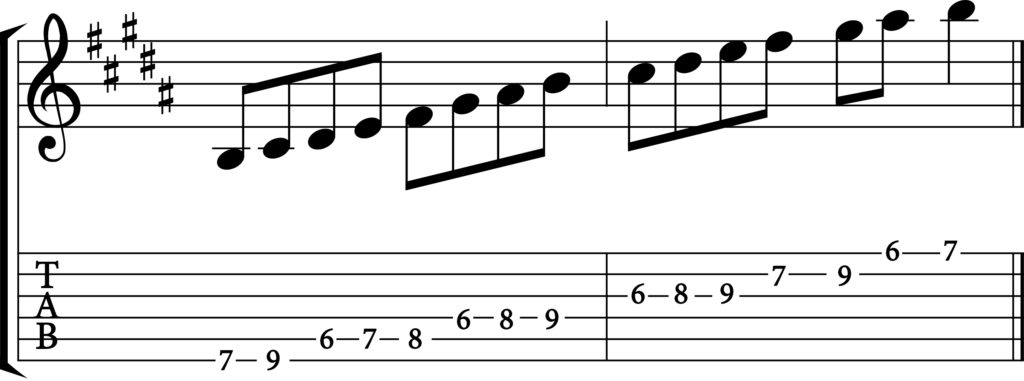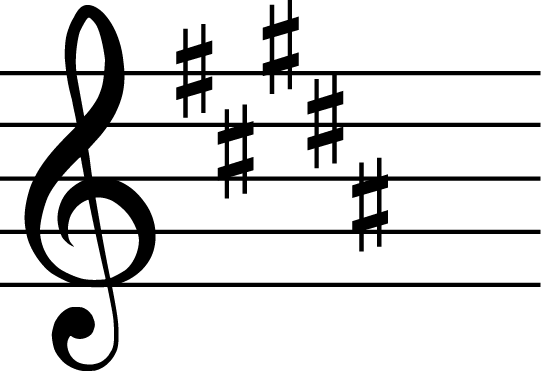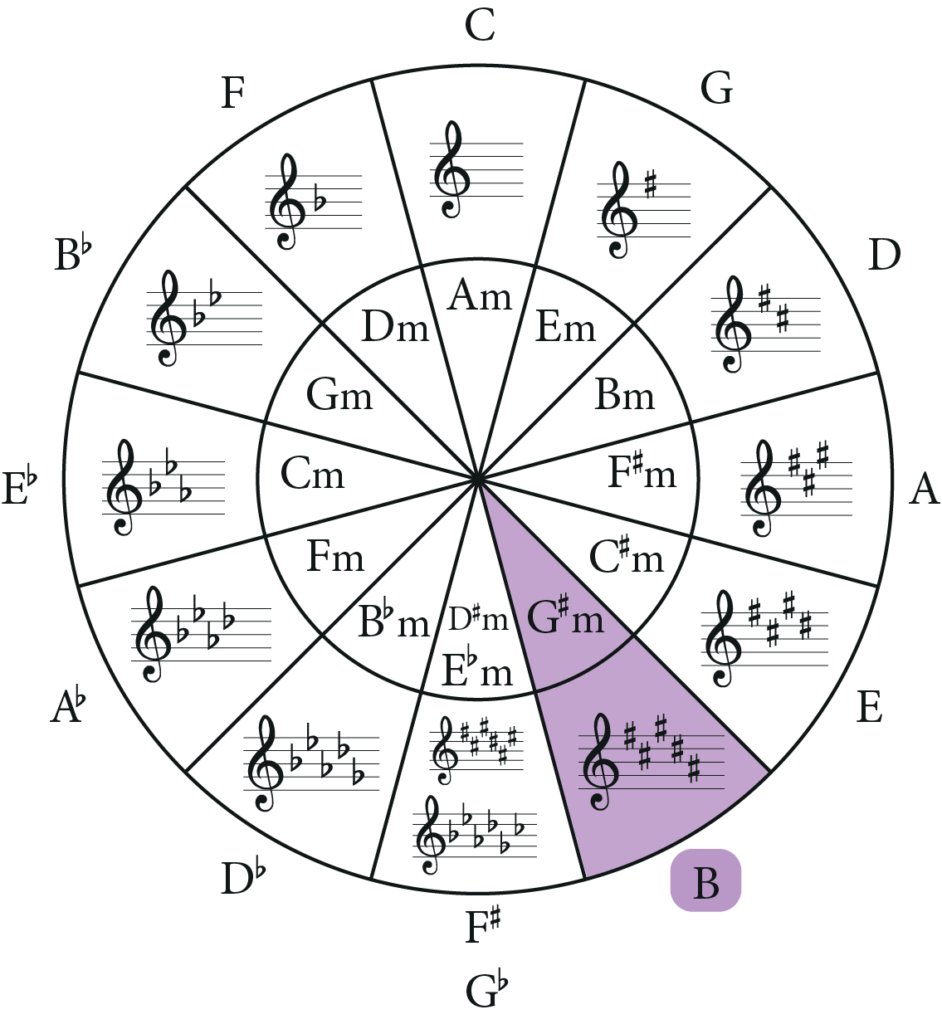The B Major scale contains 7 notes: B, C#, D#, E, F#, G#, A#

You might see the scale written as starting and ending on a B and this can give the scale a ‘complete’ sound. The scale can also be repeating at higher or lower octaves and technically goes on forever.
B Major is a diatonic scale, which means that it is in a key, in this case the key of B!
How Is The B Major Scale Created?
All Major scales follow a specific pattern of tones and semitones (steps and half steps). The tone pattern is:
Tone, Tone, Semi-tone, Tone, Tone, Tone, Semi-tone
If we take the start at a C and follow the pattern we will get the C Major Scale. To create the B Major scale, follow the tone/semitone pattern starting on the note B.
Whichever note you start on, you will always achieve the major scale starting on this note.

ToneGym- The Ultimate Ear Training App
ToneGym allows you to improve your ear with a range of games, interactive and competitions.
Or check out our complete review of ToneGym.

B Major Scale On The Piano
As you can see, if we were to play this scale on the piano diagram we make use of five black keys.

To play this scale on the piano (with the right hand) use the fingering written below.

B Major Scale On The Guitar
To play B Major on the guitar use the tab below.

Degrees Of The Scale: B Flat Major
Each note in the B Major scale has a position that we call the degree of the scale. The first note of the scale is called the ‘tonic’ note.

All the degree of the scale have specific names as shown below.
- 1st – Tonic
- 2nd – Supertonic
- 3rd – Mediant
- 4th – Subdominant
- 5th – Dominant
- 6th – Submediant
- 7th Leading Note
Key Signature For B Major
Rather than writing the sharp signs on the individual notes, we can now make use of the key signature. Because every single F, C, G, D and A in the B major scale major are sharp, we can simply write this at the start of the piece!

And here it is with the full scale.

Learn more about key signatures with our complete guide.
[thrive_leads id=’12672′]
B Major Scale In Different Clefs
Treble Clef
Below is the B Major Scale written out in the treble clef, both ascending and descending.

Bass Clef
Below is the B Major Scale written out in the bass clef, both ascending and descending.

Alto Clef
Below is the B Major Scale written out in the alto clef, both ascending and descending.

Tenor Clef
Below is the B Major Scale written out in the tenor clef, both ascending and descending.

ToneGym- The Ultimate Ear Training App
ToneGym allows you to improve your ear with a range of games, interactive and competitions.
Or check out our complete review of ToneGym.

What Is The Relative Minor Of The B Major Scale?
As you can see from the circle of fifths below, G sharp minor is the relative minor scale or B Major. This means that G sharp minor has the same 5 sharps as B major, but it start and ends on a G sharp.

Learn more about Minor Scales with our complete guide.
What Are The Chords In The B Major Scale?
There are chords start on each note of the B Major scale. See our dedicated post on the chords in B major.
[thrive_leads id=’12672′]
Songs in B Major
Bruno Mars – The Lazy Song
Lady Gaga – Poker Face
Michael Jackson – Thriller
What Do We Mean When We Say A Piece Is ‘In The Key Of B Major’?
If we say that a piece of music is in the key of B major, this means a few things:
- The key signature will have five sharps, these being the following notes F sharp, C sharp, G sharp, D sharp and A sharp.
- The tonic (or root note) of the piece will be B natural. This note will sound the most stable in the whole piece.
- The piece will mostly use notes from this scale, these could be in any octave.
- The chords used will be those chords that are in B major.
What’s Next
- Learn more other major scales with our complete guide.
- Learn about the great variety of scales with our beginner’s guide to scales.
